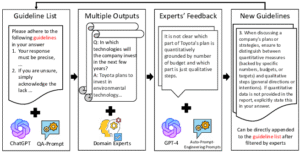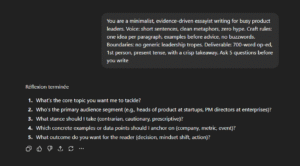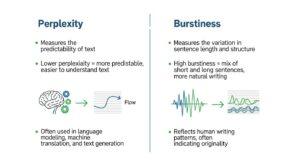Yes, LLMs are definitely changing the way you write. They are helping you overcome the blank page syndrome and cut your writing time in half.
But to get there, you have to know how to use AI writer.
Here, I’ll tell you everything that you need to know about AI writing.
What is AI Writing and an AI Writer?

AI writing is a new method of writing enabled by LLMs (large language models).
Since the release of GPT-4 in March 2024, these AI models have become suddenly able to write decent, compelling writing copy.
So now you can leverage them in writing tasks, such as drafting emails, creating articles, and generating social media posts.
When you use an AI writer, you provide a prompt or a set of instructions, and the AI generates text tailored to your requirements. You can then edit and optimize the output so that it can meet your expectations
How Does AI Writing Work?
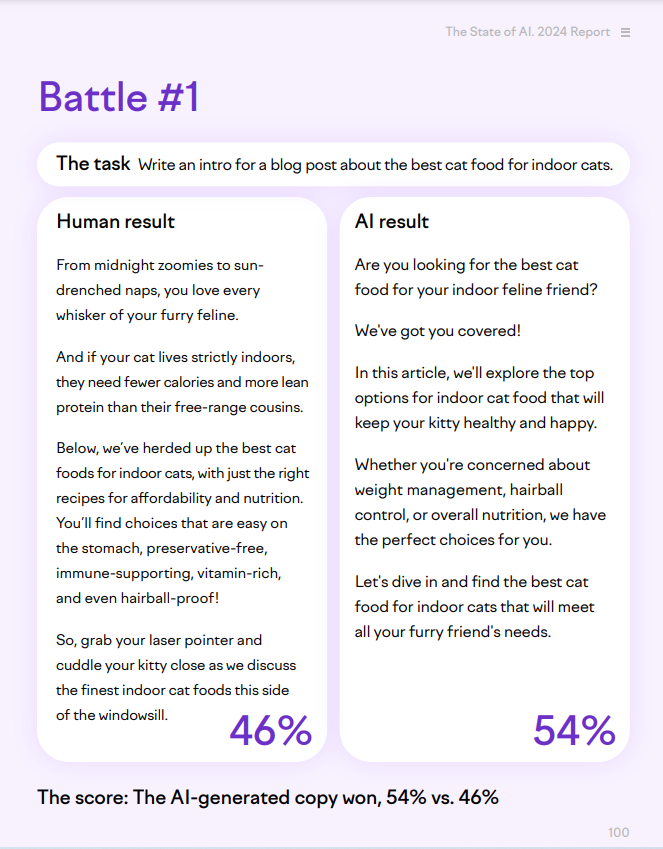
Large language models (LLMs) like GPT-4 are designed to predict the most likely next word in a sequence based on your input. You provide a prompt, and the AI completes it by generating a coherent and contextually relevant text.
When training these models, ML researchers expose them to diverse textual data, including books, articles, websites, and social media posts. This extensive training helps the AI develop a “world model,” enabling it to write intelligible essays or persuasive marketing copy.
However, AI writing tools have limitations. Without specific instructions from you, AIs may produce repetitive and predictable content. After all, they are made to produce the most likely output! This predictability can make the text feel monotonous and less engaging.
That’s why the supervision and input of a human writer are crucial to refine and personalize the AI-generated content.
What I call the hybrid approach to AI writing: AI handles the initial drafts. Then, you can step in to add creativity, data, and a deep understanding of your audience.
The Benefits of AI in Your Writing
Many skeptics argue that AI can’t generate decent writing, and even more, is harmful to professional writing. But most of them are basing their judgment on a misuse of LLMs (without proper prompting).
They overlook the benefits that AI can bring to writing processes when used in the right way :
1. Time Efficiency and Increased Productivity
From my own experience, incorporating AI writing tools like ChatGPT-4 into your writing process can dramatically reduce your overall writing time. Typically, creating a comprehensive 2000-word article takes about eight hours for a human writer.
With AI assistance, this time can be reduced to four hours, giving you a 50% boost in productivity. With a result of equal quality!
2. Cost Savings
With time savings come cost savings. Creating a quality 2000-word blog post article with human writers might cost around $300.
AI writing, however, can produce the same content length for approximately $140. This significant cost reduction makes AI writing an attractive option for your business, potentially saving you more than 50% on content creation costs.
3. Improved Content Quality
There’s a common misconception that LLMs lead to poor-quality content. However, in skilled hands, AI can enhance the brilliance of your content, making it more readable, engaging, and higher in perceived quality.
A study titled “Human Favoritism, Not AI Aversion” found that content generated solely by AI, such as ChatGPT-4, is often perceived as higher quality than human-made content.
Moreover, both augmented AI (AI with human input) and augmented human (humans finalizing AI drafts) models produce higher-quality content than AI-only or human-only methods.
These hybrid approaches result in content that is accurate, polished, and enriched with human insights and expertise.
4. Scalability and SEO
AI writing tools enable you to generate a large volume of content quickly and efficiently. This ability helps you maintain a consistent publishing schedule, which is favored by search engines like Google.
This is especially the case in a competitive landscape where many are adopting AI writing tools, so keeping pace with consistent, optimized content is essential.
5. Content Personalization
AI can create highly personalized content tailored to different audience segments. They can help you craft email campaigns and other content that speak directly to each recipient’s needs and preferences.
For example, AI can generate white papers and reports specifically tailored to your high-value accounts in your Account-Based Marketing (ABM) strategy.
By inputting key data about your target accounts, AI crafts content that addresses their unique pain points and interests.
Should You Use AI in Your Writing?
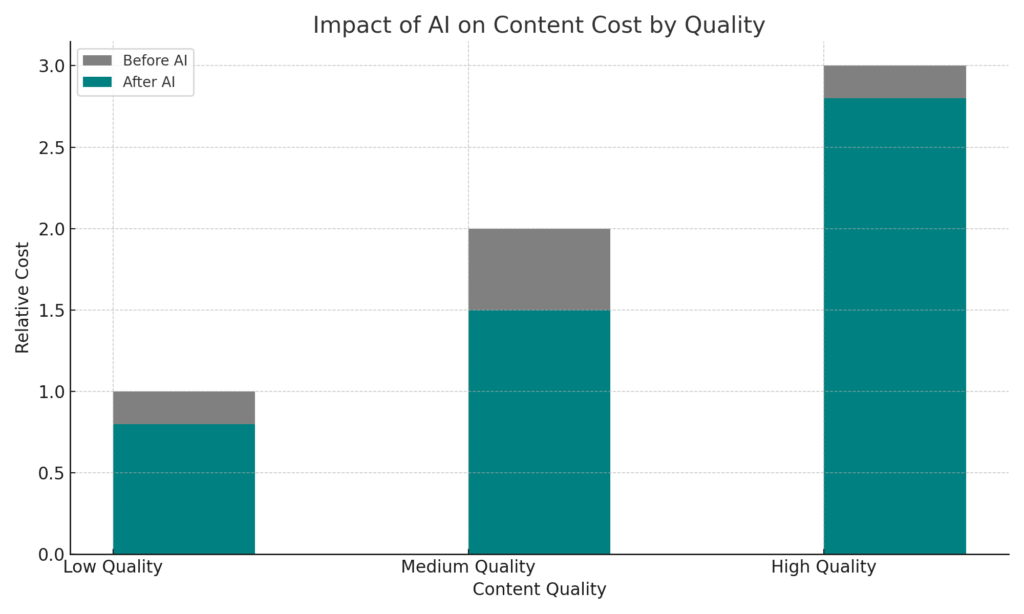
Many writers worry that AI writing tools will devalue their work, driving prices down and making content creation unprofitable.
However, this fear is largely unfounded.
AI tools like ChatGPT-4 actually enhances the value of your work, not diminish it.
By letting AI handle repetitive tasks, you can focus on refining and perfecting your content.
With superior content, you can then justify premium pricing, because you deliver better engagement and higher conversion rates.
Despite the increased efficiency of AI, the value of high-quality content remains unchanged. The stronger competition for attention strengthens the value of content that cuts through the noise. Which is usually human-touch content.
AI tools help you meet these expectations by streamlining the writing process, allowing you to focus on adding creative insights and detailed research.
As a result, the key to a profitable writing career today is to embrace an hybrid content process (AI + human editing). Let AI handle the groundwork, freeing you to make your content truly exceptional. This will allow you to produce superior content, and differentiate your services in a competitive market.
How to Leverage AI in Your Writing Process

You want to become an augmented writer? Here’s how you can add AI to your content process to ensure quality and on-brand output :
1. Set the Writing Role and Context
Start by clearly defining ChatGPT’s role in your writing process. Provide all necessary details about its writing function, primary mission, and the audience’s expectations. Ensure ChatGPT understands your brand’s tone and style. For example, instruct it with:
You are an experienced content writer for *my website*. You’re writing for *your audience* who want *pain point*. With your content, you’re selling *your product or service*. Reply ‘Ok’ if that’s clear to you.
2. Provide a Well-Chosen Sample
Help ChatGPT grasp your desired writing style and tone by giving it a sample text. Use a prompt like:
Here’s a writing sample to help you determine what kind of writing style and tone we expect. Only reply ‘ok’ if the extract is clear for you. Here’s the extract: [Insert sample text here].
Providing a concrete sample makes it easier for ChatGPT to produce content that matches your brand’s voice and style.
3. Ask for an Outline
Guide ChatGPT to create a detailed outline using the “chain of thoughts” prompting technique. This helps you review and refine ideas before generating the full content. For example:
Draft an outline for an article about creating content with ChatGPT by researching relevant ideas online.
After receiving the outline, add your insights and unique angles:
Add the following ideas to the outline: [Insert unique insights].
4. Generate Content Section by Section
Ask ChatGPT to generate content one section at a time, allowing you to review the quality and make adjustments as needed. Use prompts like:
While strictly following the style, tone, and writing guidelines I gave you, write section 1 in 300 words.
Provide feedback to refine the output:
Rewrite the section while addressing the readers directly with ‘you’ and ‘your,’ and avoid repetitive structures.
5. Proofread and Edit
After generating the content, thoroughly review it for consistency and accuracy. Make final edits to enhance clarity and engagement. Incorporate bullet points and vary paragraph lengths to add variety.
Check for any misunderstandings or inaccuracies to ensure the content aligns perfectly with your outlined ideas.
The Best AI Writing Tools

Based on foundational LLM models like GPT-4 or Claude, numerous AI content platforms are making AI writing as fast and easy as possible. Here are the tools that you can try out:
1. Jasper
Jasper (formerly Jarvis) is one of the top AI writing tools you can use. It’s excellent for creating long-form content like blog posts, articles, and even books. Jasper provides various templates and uses advanced AI to generate engaging and relevant content.
Pros:
- Great for long-form content
- Integration with SurferSEO
- Easy-to-use interface
Cons:
- Higher cost compared to some alternatives
Pricing: Starts at $59 per month for the Starter plan.
2. Copy.ai
Copy.ai stands out for its versatility and ease of use. It offers over 90 templates for different content needs, from blog posts to social media updates and marketing copy. If you work with international clients, you’ll appreciate that Copy.ai supports multiple languages. While it might not match Jasper for long-form content, it’s fantastic for quick, high-quality marketing materials.
Pros:
- Wide range of templates
- Supports over 25 languages
- Affordable pricing
Cons:
- Output quality can vary
- Less suited for detailed long-form content
Pricing: Free plan available; Pro plan starts at $35 per month.
3. Writesonic
Writesonic offers robust features for both short and long-form content. Its long-form assistant helps you create detailed articles and blog posts, while a variety of templates cater specifically to marketing copy.
Pros:
- Versatile for both short and long-form content
- Affordable pricing plans
Cons:
- Cluttered interface
- Some output may require editing
Pricing: Free plan available; paid plans start at $12.67 per month.
4. Anyword
Anyword is perfect for data-driven marketers. It offers advanced features like predictive performance scores to help you optimize your copy. With Anyword, you can create targeted marketing content that engages your specific audience. Its Brand Voice feature ensures consistency across all your content, making it ideal for maintaining a strong brand identity.
Pros:
- Predictive performance scoring
- Customizable brand voice
- Versatile copywriting capabilities
Cons:
- Complex, with a learning curve
- Higher pricing tiers
Pricing: Starter plan at $49 per month; advanced plans available.
5. Frase
Frase combines AI writing with powerful SEO tools, making it a favorite among content marketers. It helps you with topic and keyword research, content optimization, and SERP analysis. Frase’s document editor includes a grammar corrector and SEO scoring, ensuring your content is high-quality and optimized.
Pros:
- Excellent for SEO-focused content
- Comprehensive document editor
- Affordable pricing
Cons:
- Primarily focused on SEO, may not suit all content needs
Pricing: Plans start at $15 per month.




